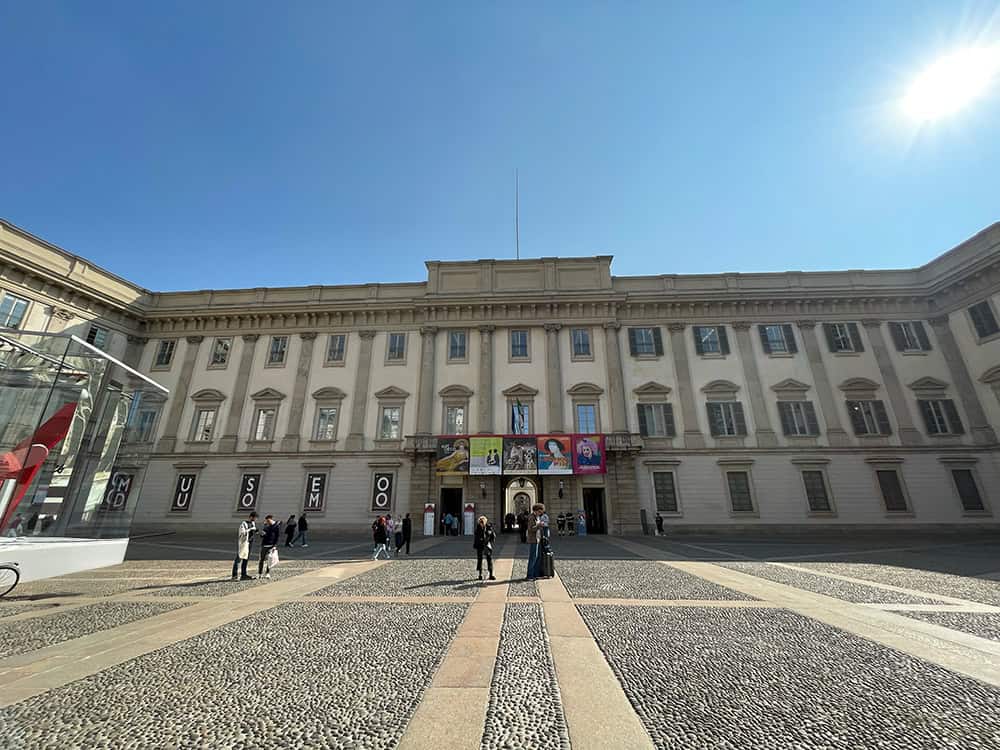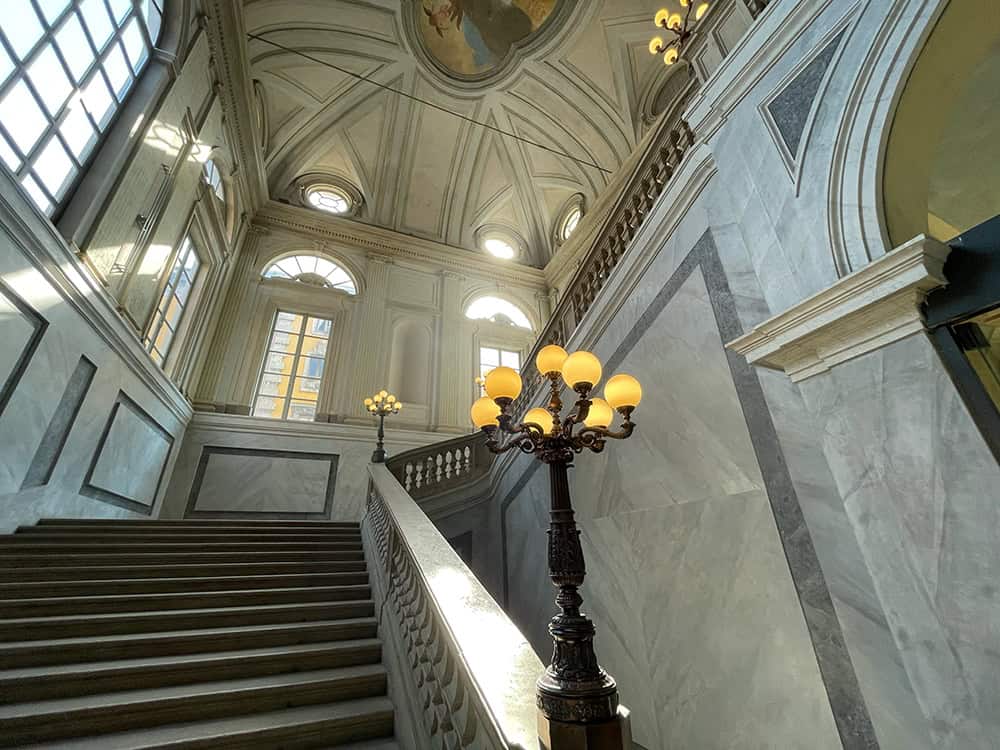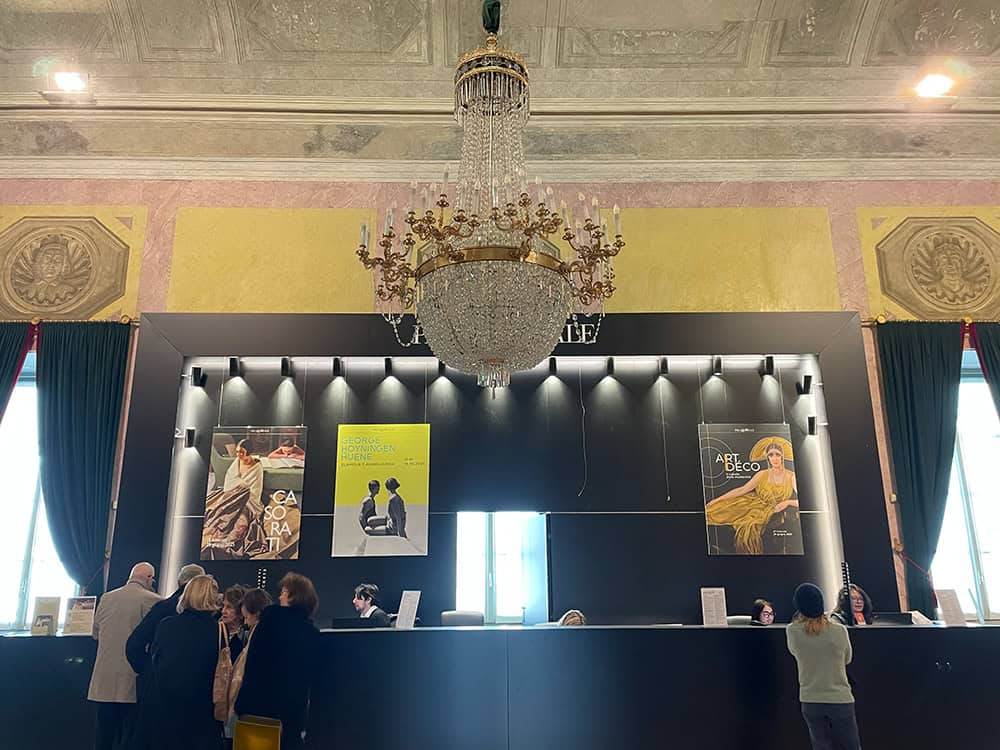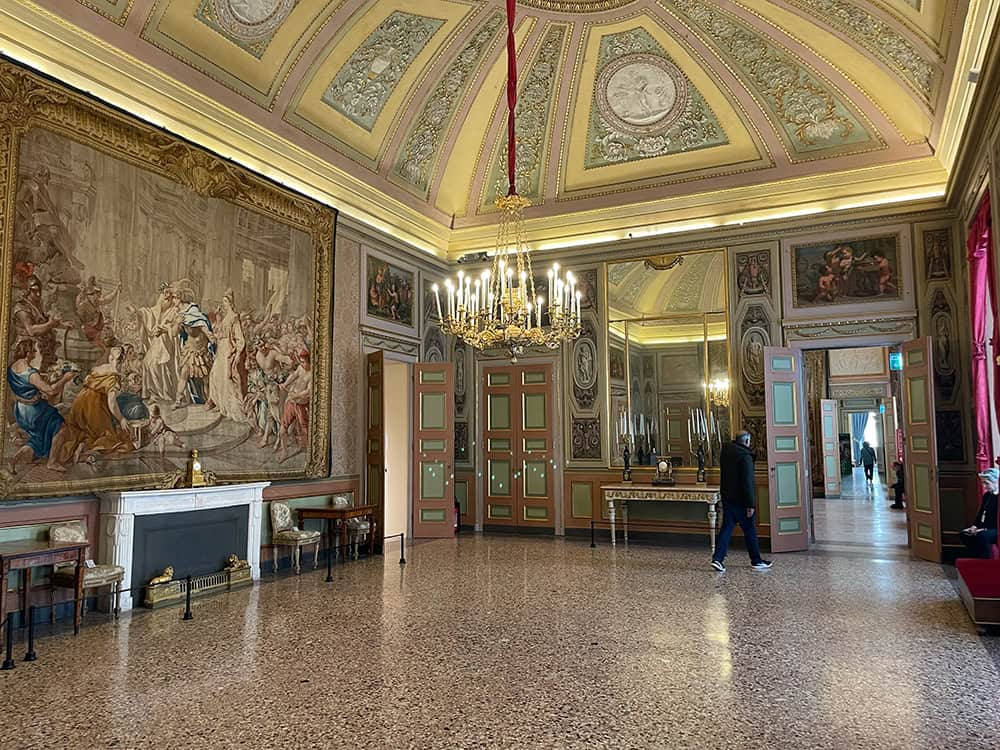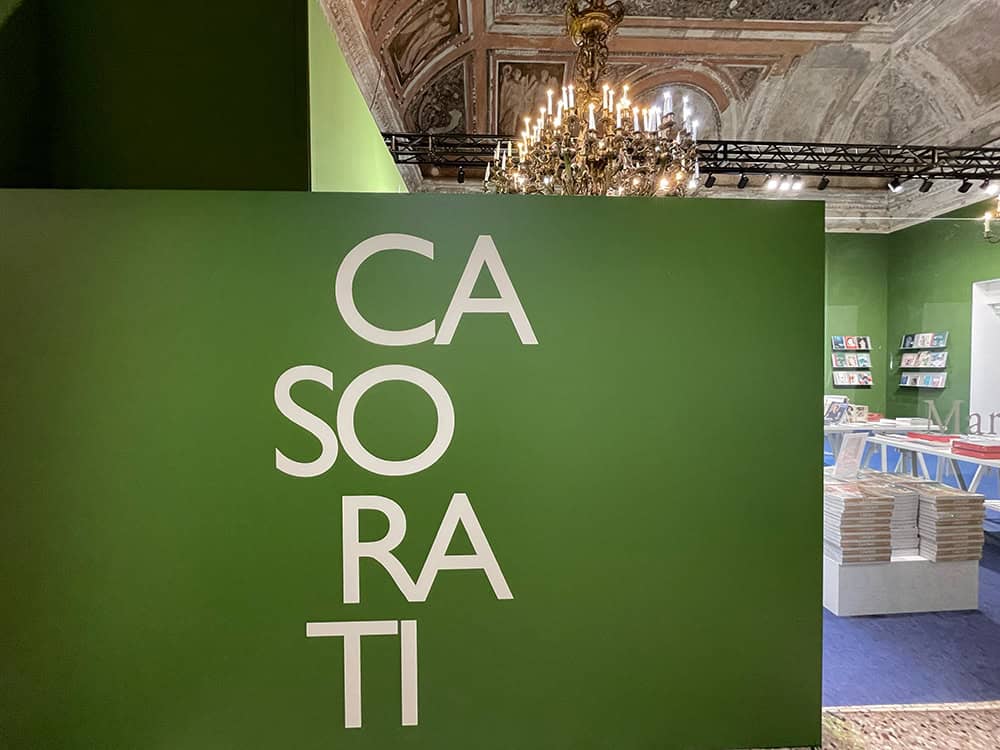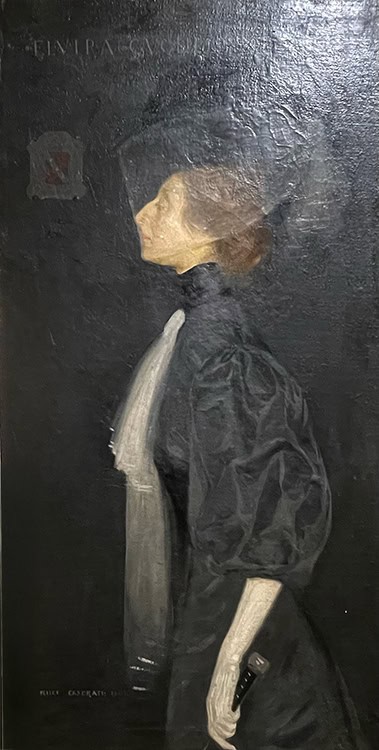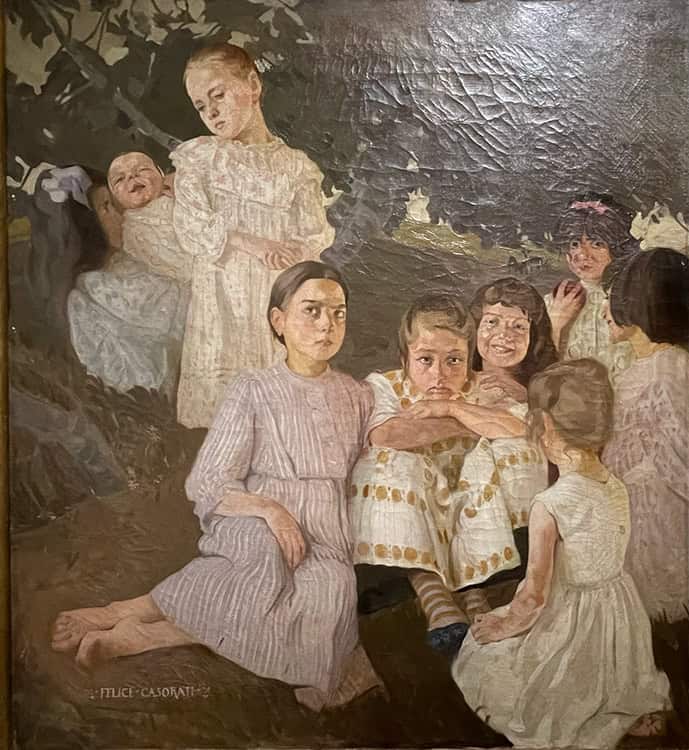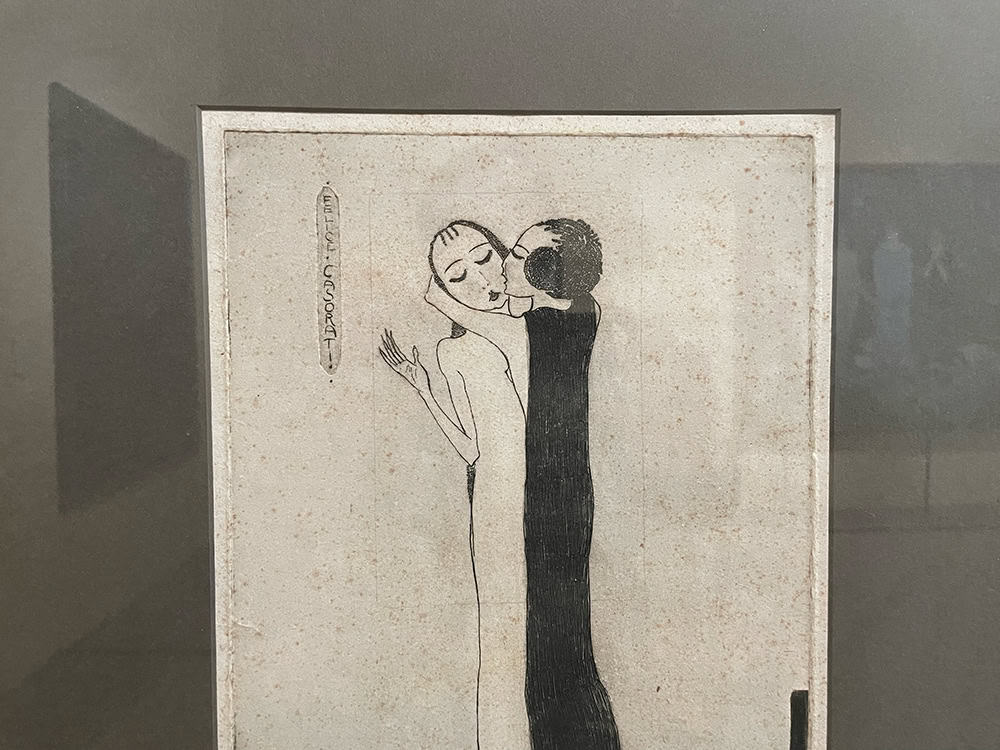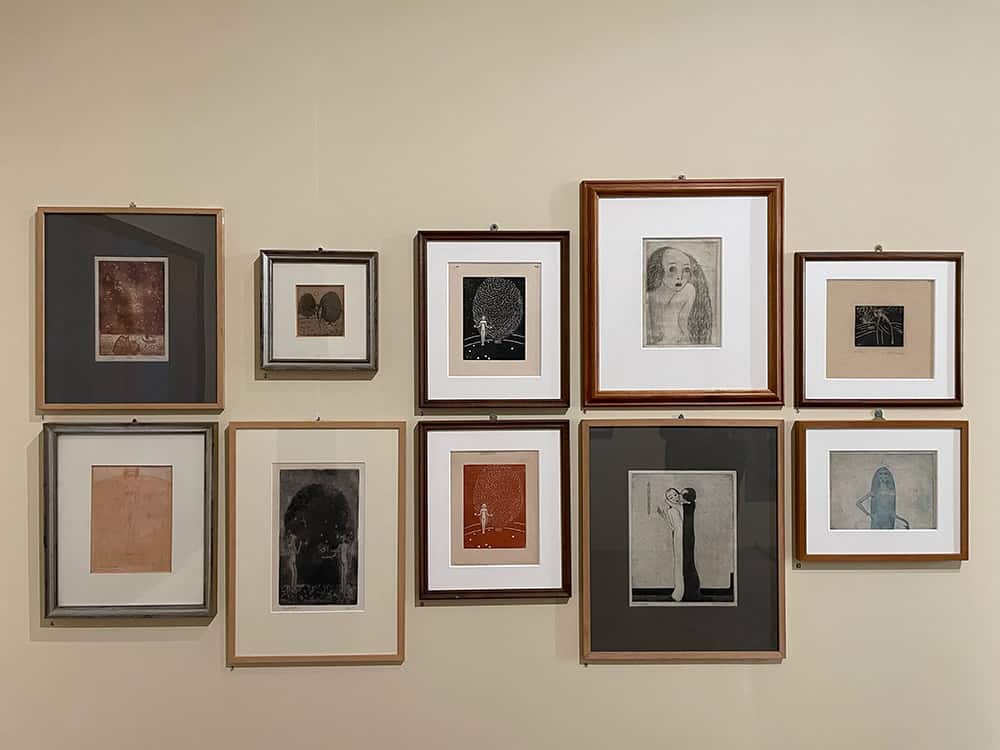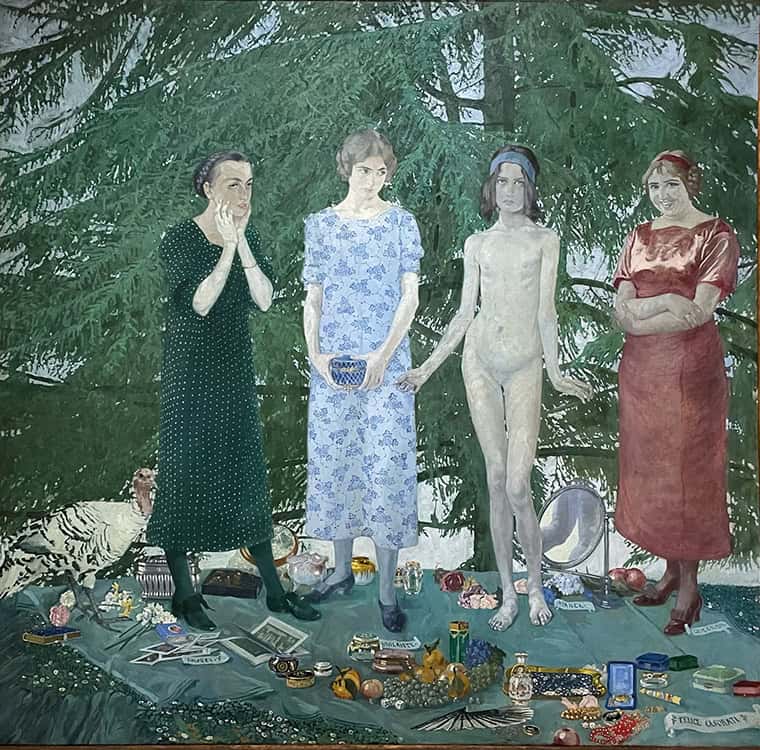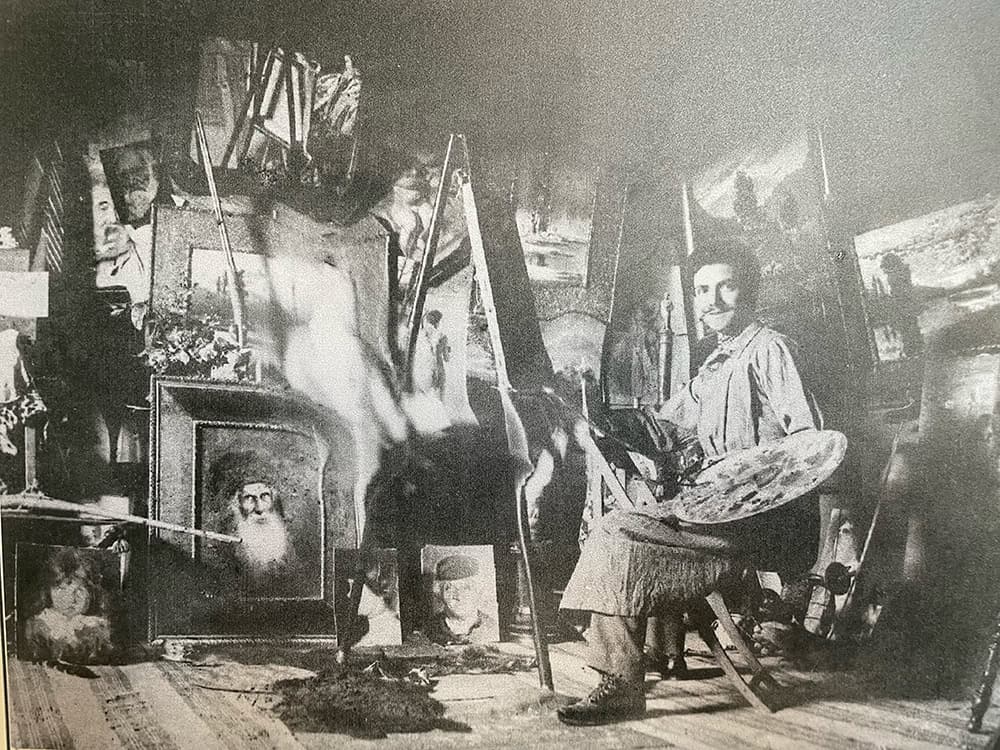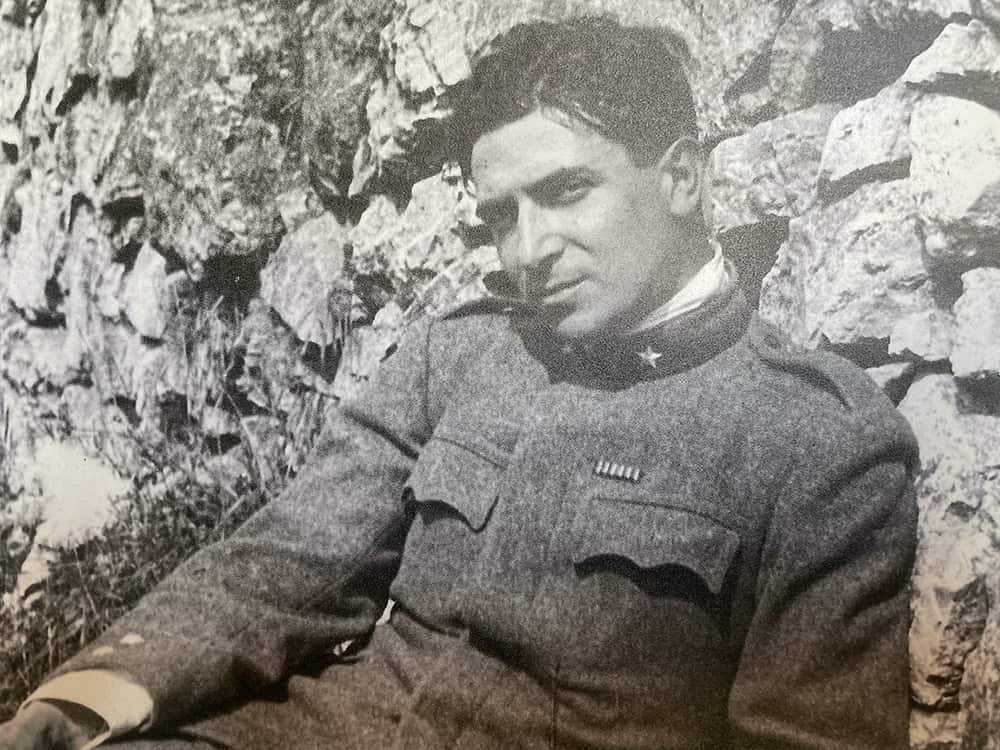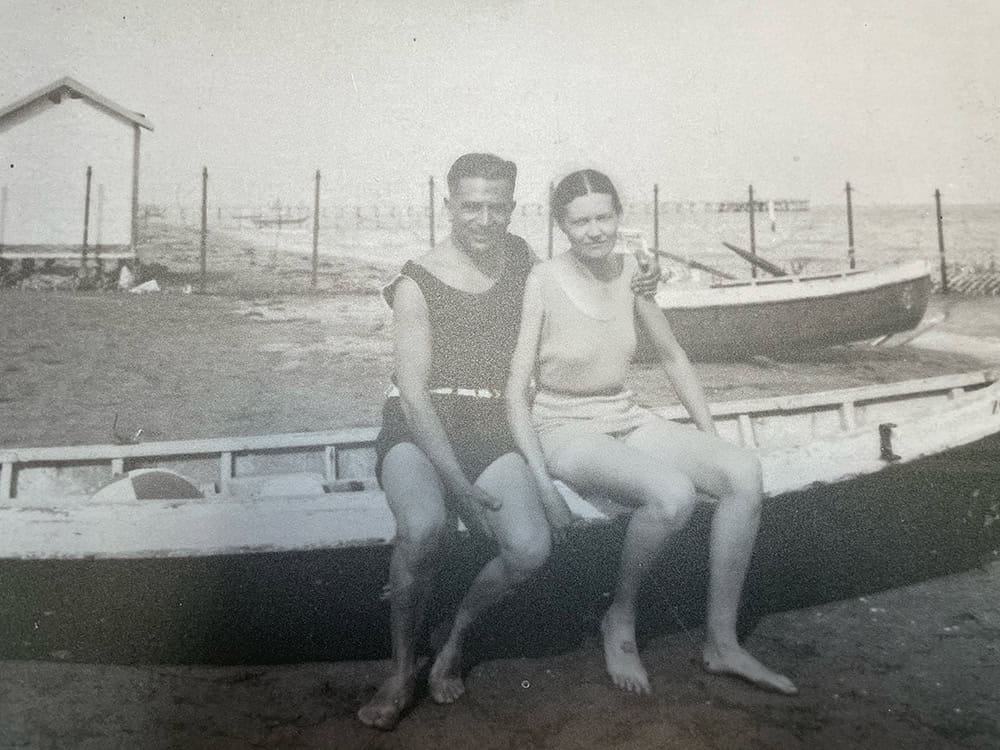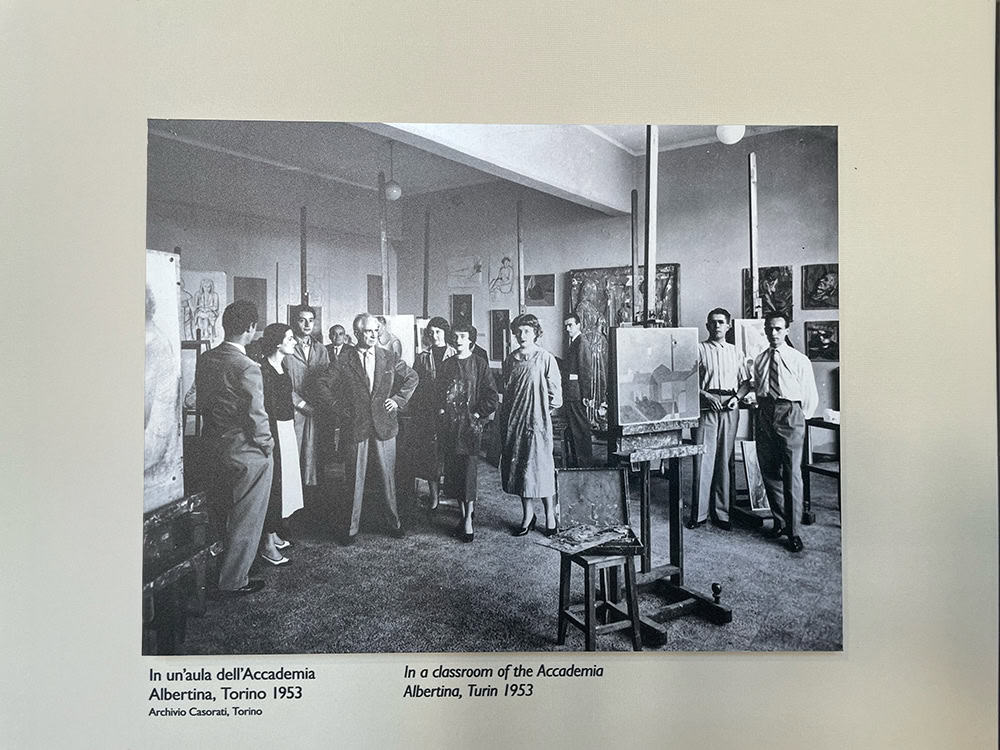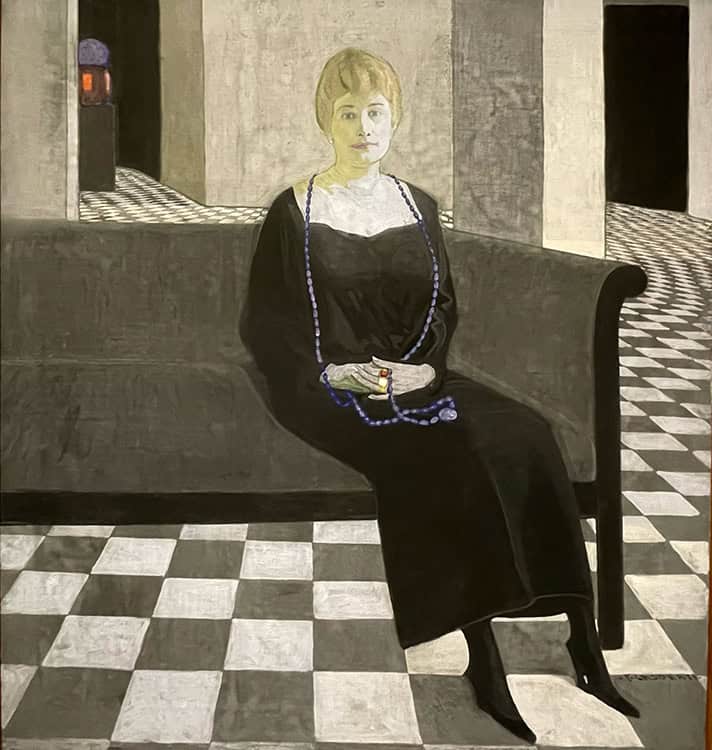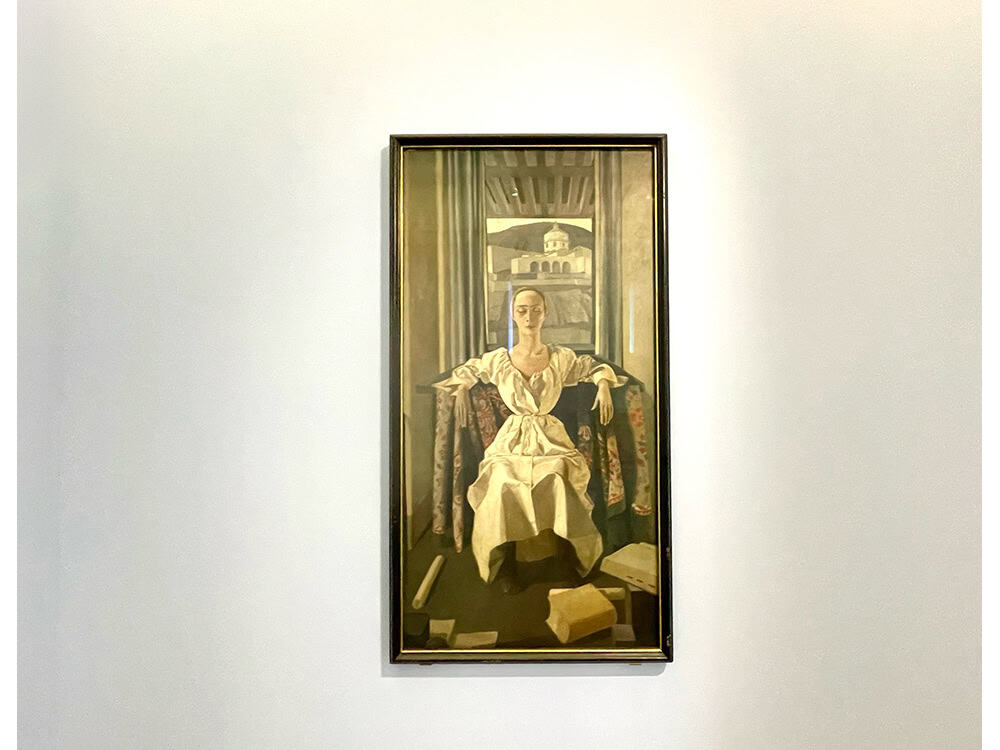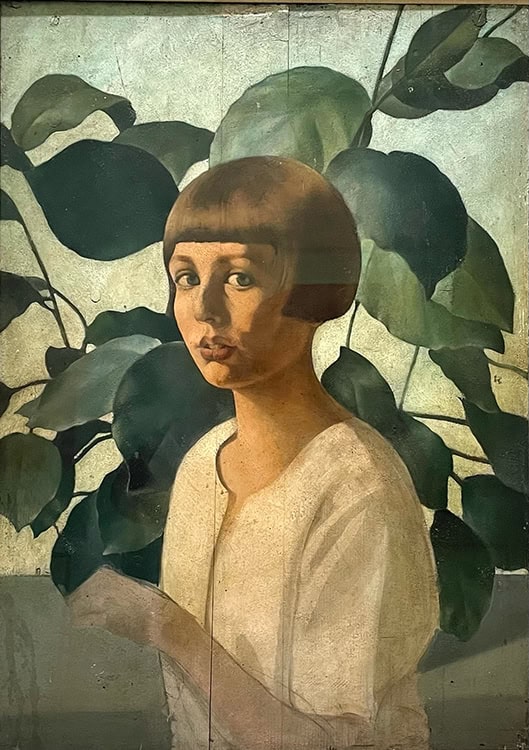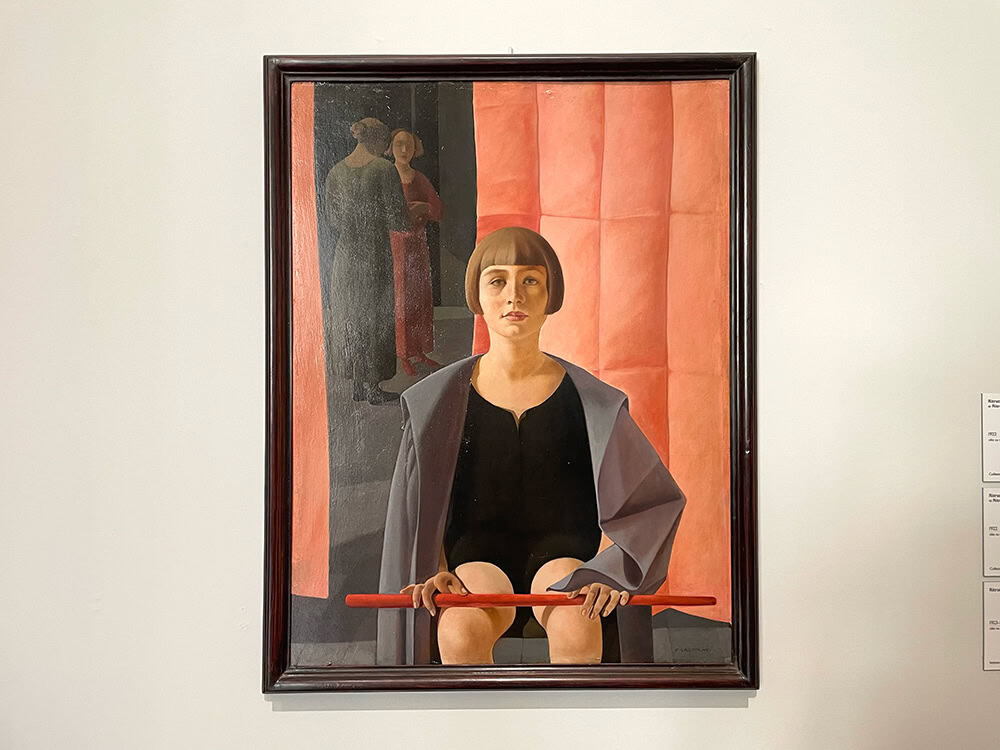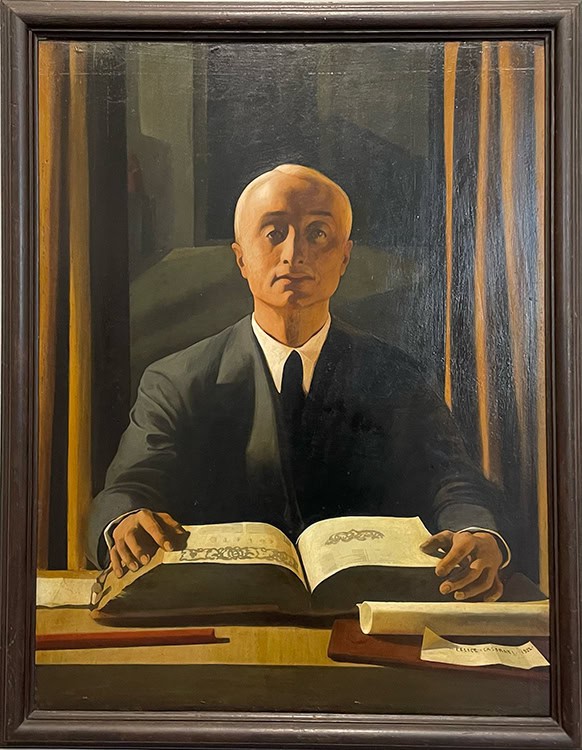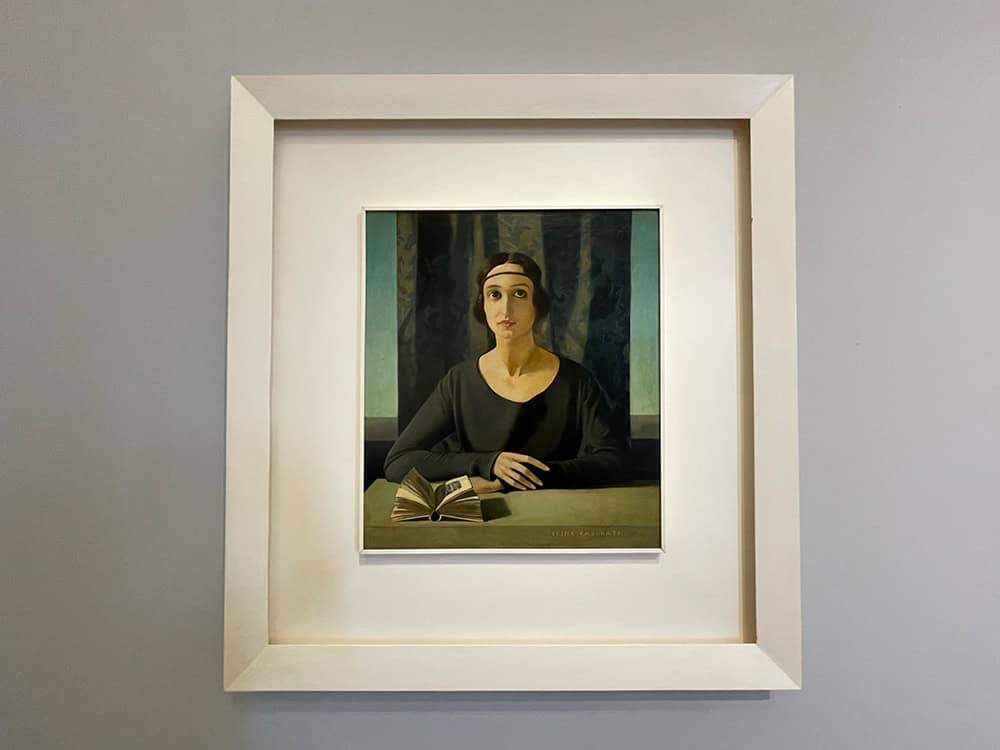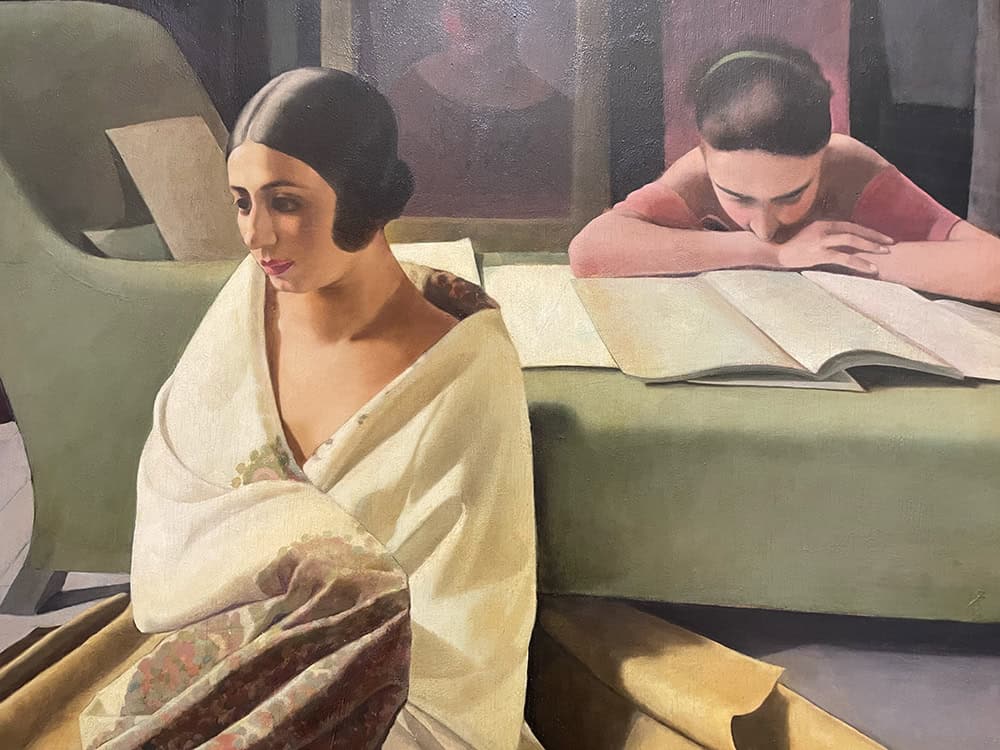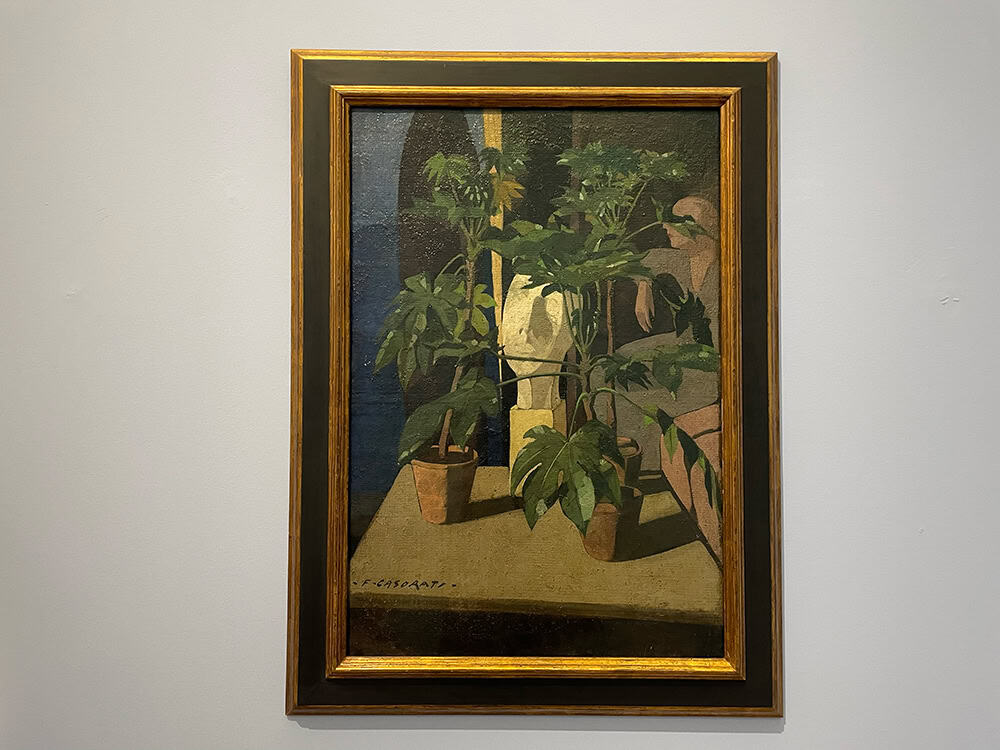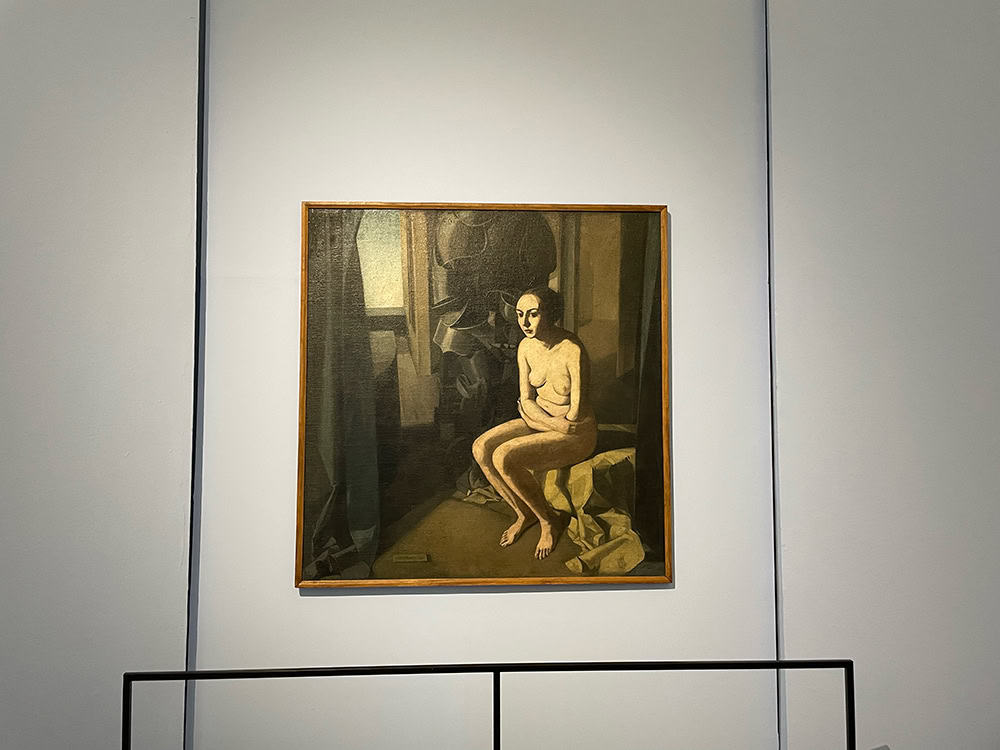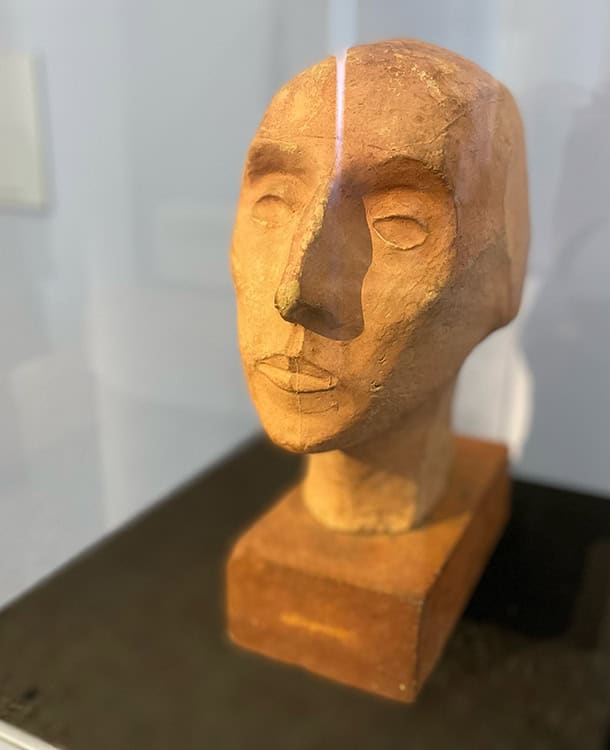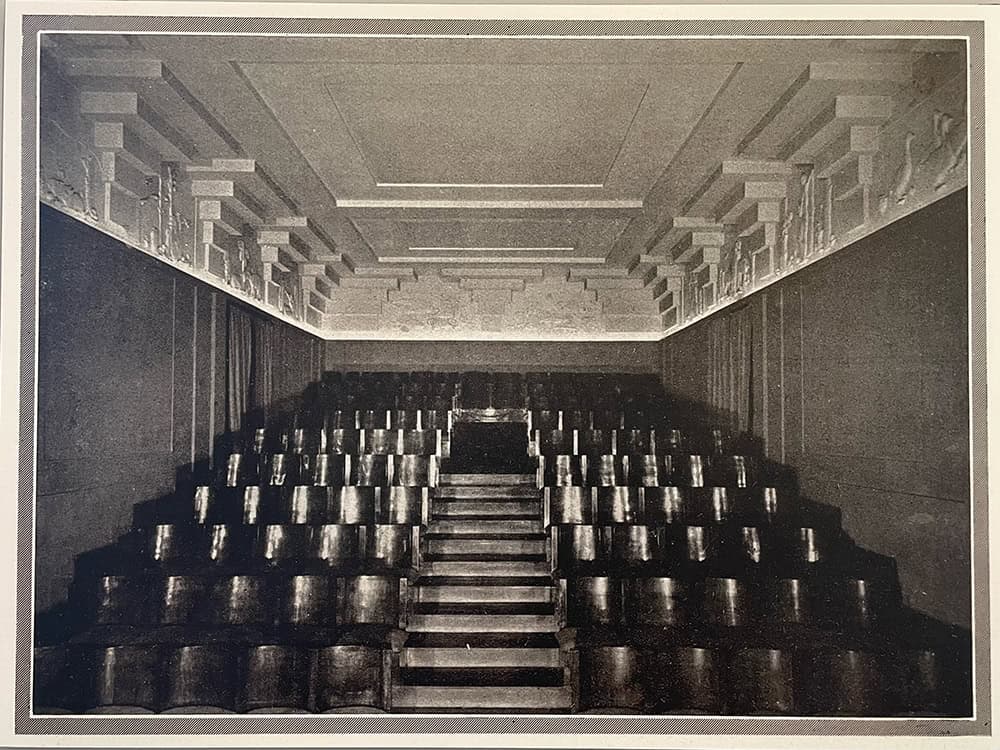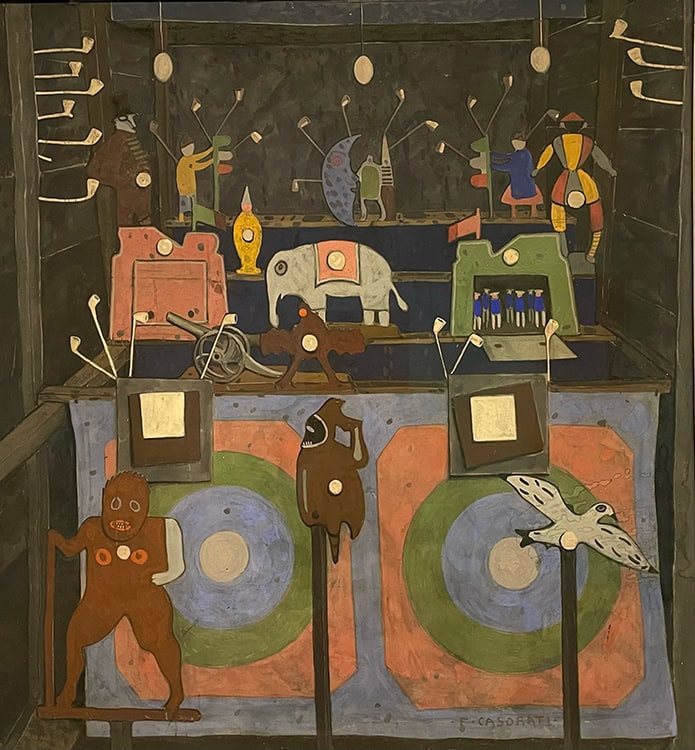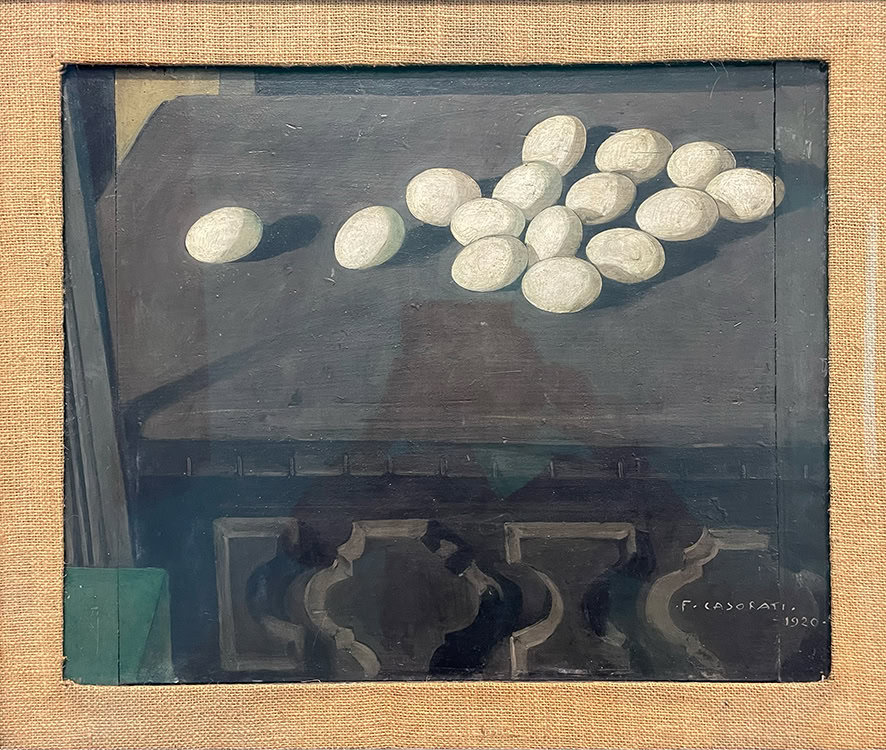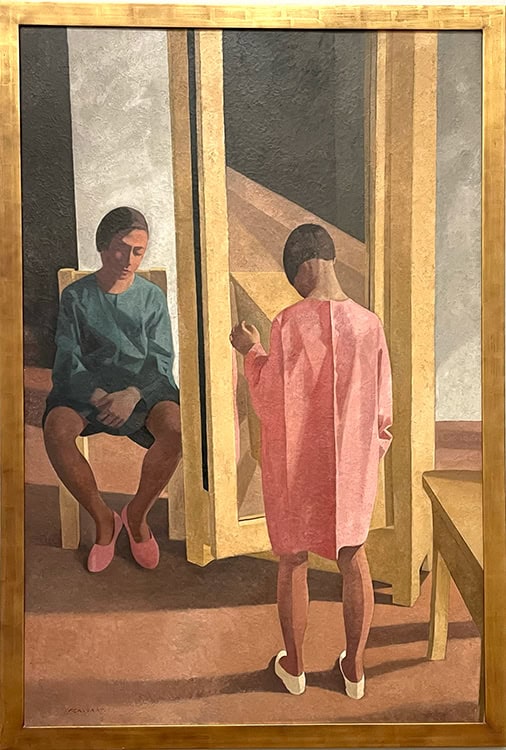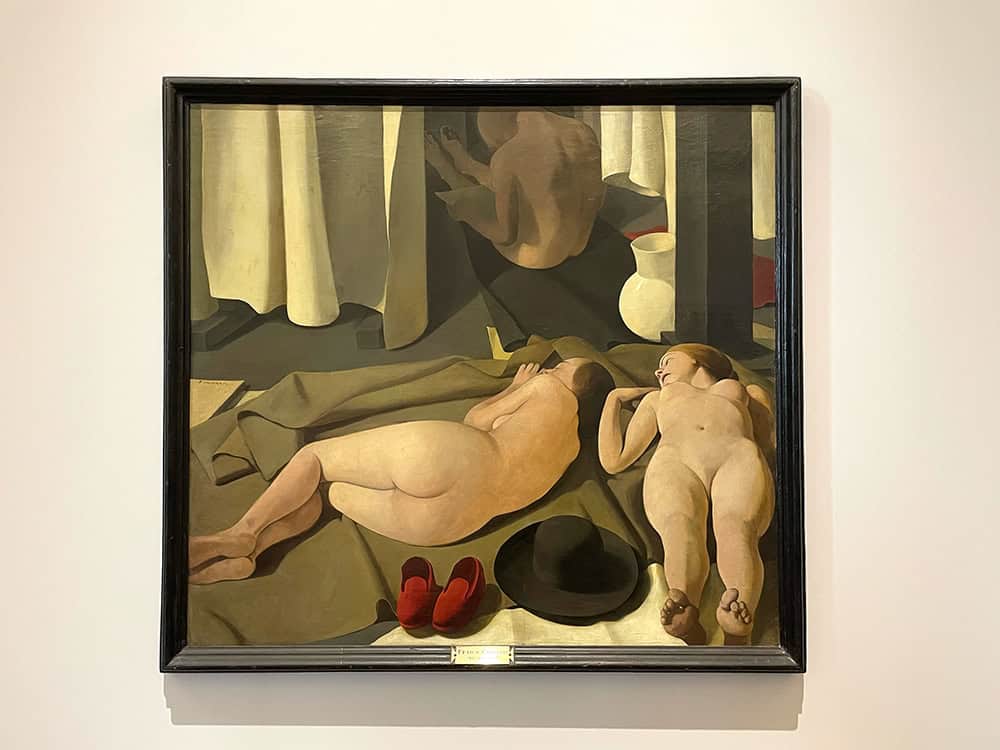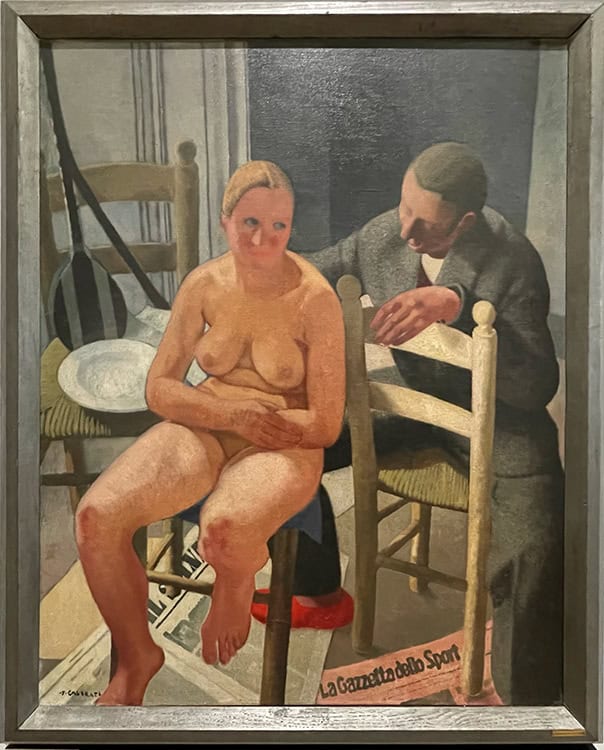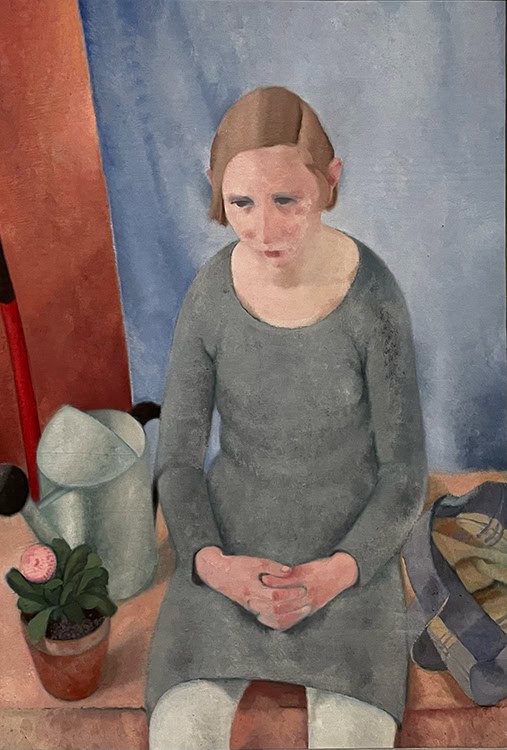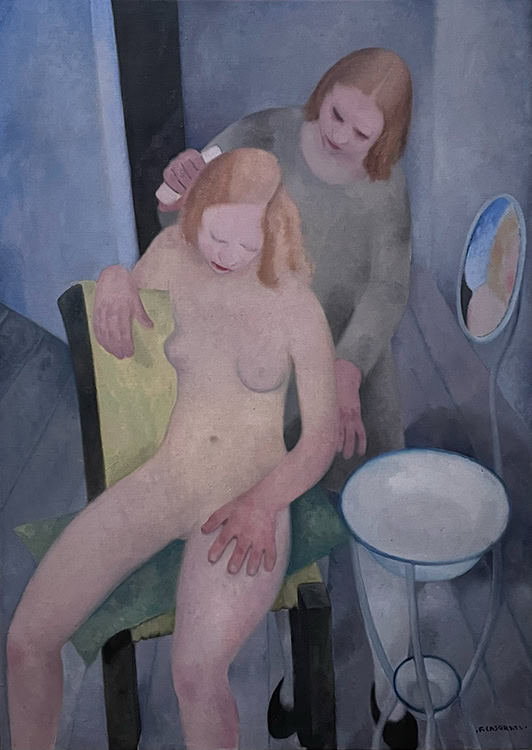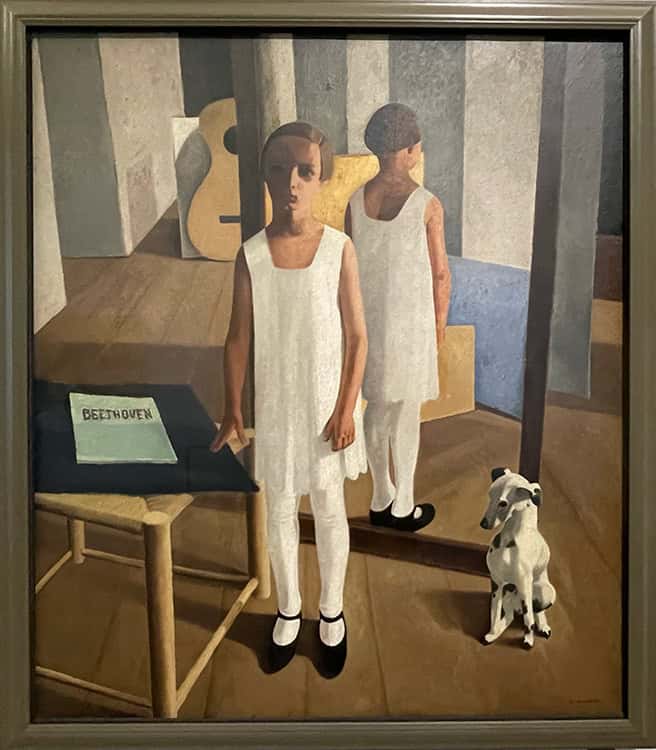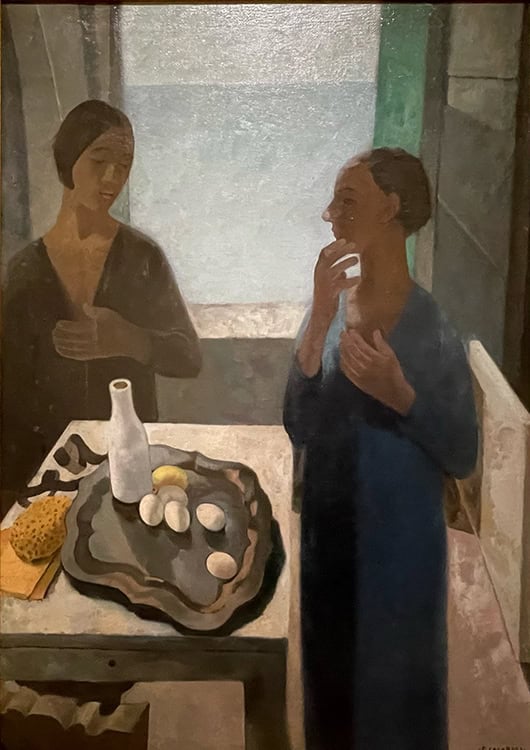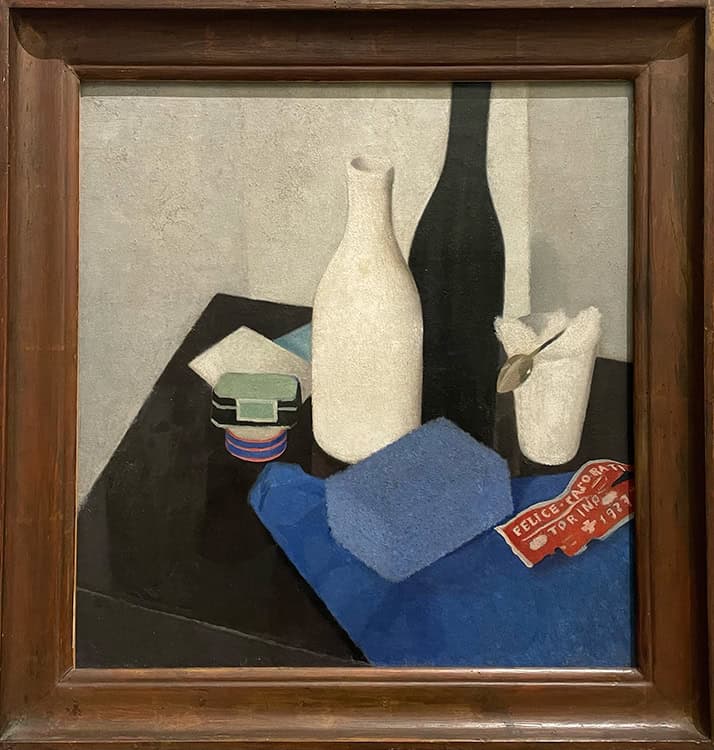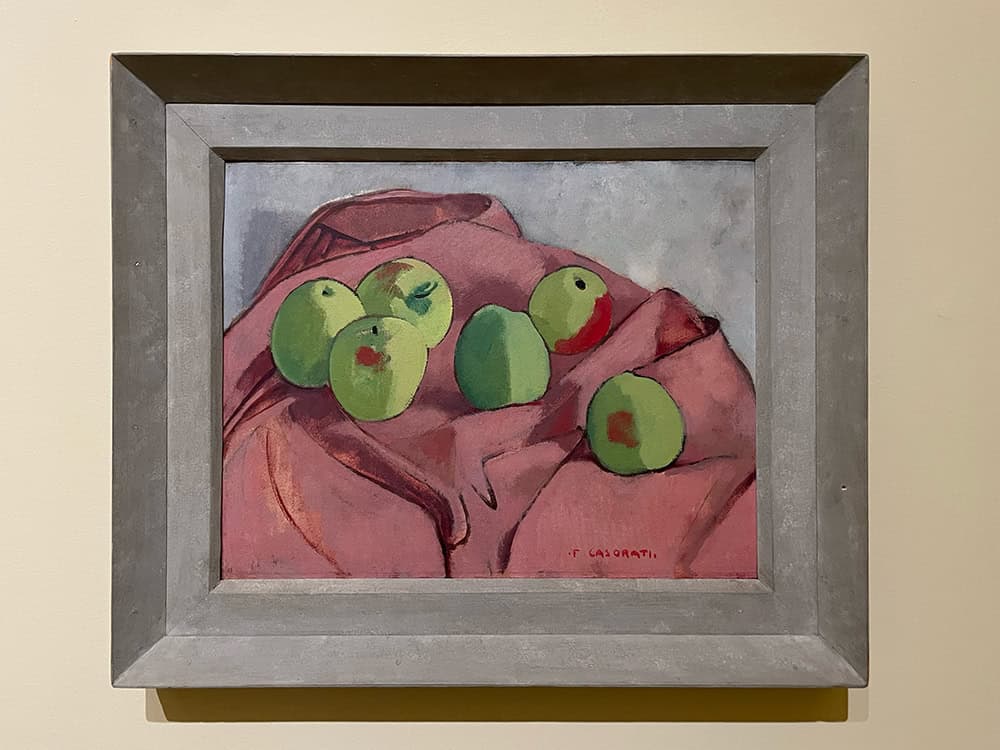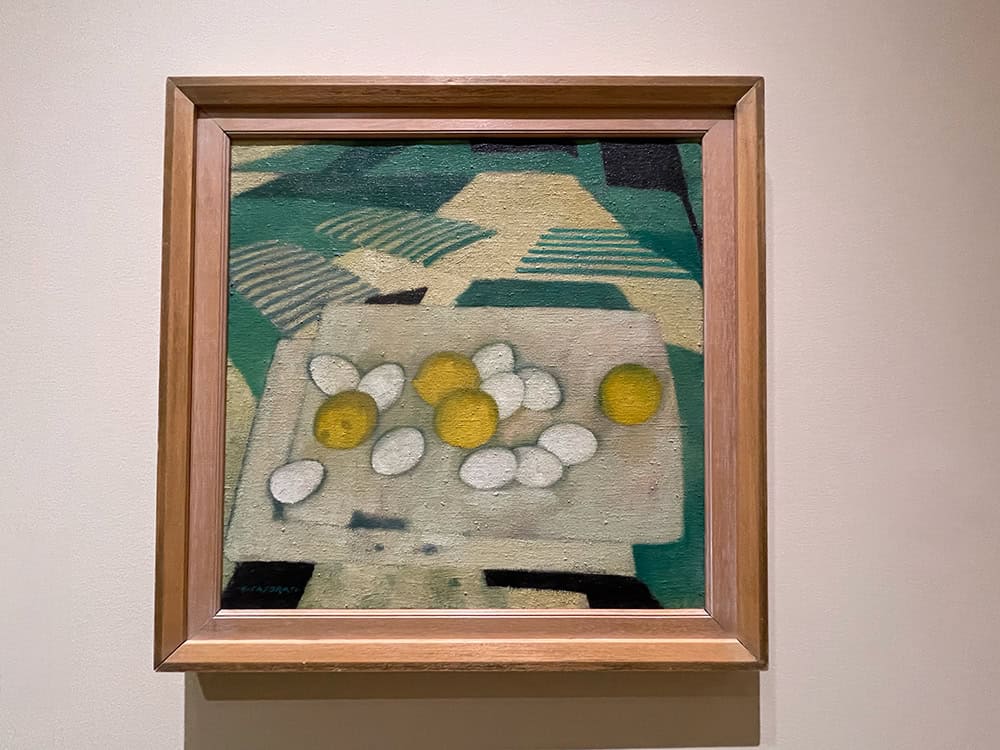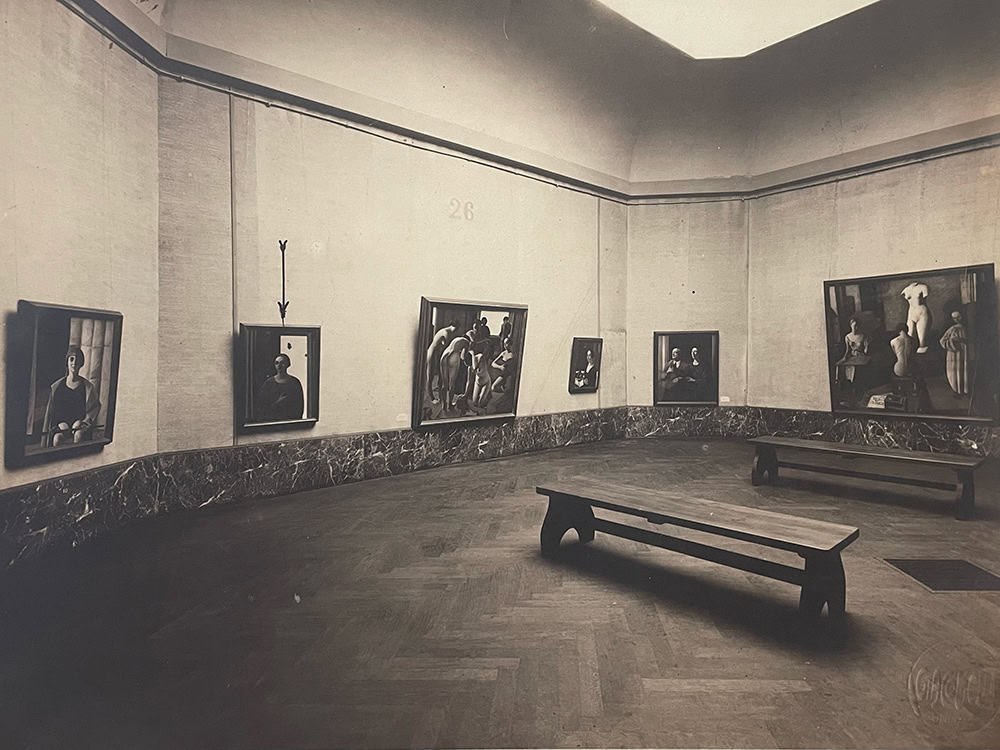If you are passing through Milan before June 29, 2025, don’t miss the beautiful exhibition that the Municipality of Milan is dedicating to Felice Casorati, set up at Palazzo Reale with 100 masterpieces illustrating his entire career.
His works are never absent from group exhibitions on Italian painting of the first half of the 20th century, but a retrospective exhibition hasn’t been seen in our city for 35 years: what better occasion to deepen your knowledge of one of the most important Italian artists of the twentieth century and certainly one of the most beloved by the public and the art market, thanks to the charm that his painting—between Magic Realism and Symbolism—still emanates nearly 100 years later.
Felice Casorati was born in Novara in 1883. During his childhood and adolescence, he moved frequently following his father, a career officer, until he arrived in Padua in 1915, where he attended classical high school and, in 1906, graduated in Law; it was in Padua that he began his artistic apprenticeship.
During his artistic life, Casorati went through the period of the avant-gardes, the return to order, the fascist period, and the postwar years. “Gifted with an unmistakable personality,” wrote Giuseppe Marchiori in the biography of the painter included in the Biographical Dictionary of Italians, “Casorati did not let himself be involved in the avant-garde movements of his time—Fauvism, Expressionism, Cubism, Futurism—yet he was able to draw vital sap from them to infuse a spirit of modernity into his works, based on a classic intellectual rigor.”
His youthful works reveal a certain inclination for Symbolism and attention to international scenarios, the Viennese Secession as seen in the Portrait of His Sister Elvira, the first painting he exhibited, in Venice at the Biennale of 1907.
Belonging to the Symbolist period is The Young Ladies, where he meticulously paints beauty objects, an allegorical picnic set before four female figures who represent, from left to right, different psychological types (the saddened one, the shy one, the bold one, the carefree one).
Casorati’s leap in artistic quality coincides with his arrival in Turin in 1917 after losing his father and taking an active part in the Great War, and where in 1921 he opened an art school for young artists (– the Casorati School – in his Turin studio) and where he met his future wife, Daphne Maugham.
Among the book-lined walls of his home, Casorati found the ideal place to develop and express his artistic message, rigorous and sober, refined and solemn. His friendship with Piero Gobetti and the group of Rivoluzione Liberale reinforced his aversion to the fascist regime. Casorati’s house itself became a meeting place for friends and artists.
In addition to staying informed on the developments and trends of his contemporary painters, Casorati built important relationships with the leading critics and collectors of his time, such as Riccardo Gualino, entrepreneur, patron, and art collector, who commissioned him various works including the decoration of his private little theater, of which a beautiful photographic image is included in the exhibition.
In his long career, Felice Casorati was not only a painter, participating in various editions of the Venice Biennale, but also a graphic designer, sculptor, architect, set designer, and he developed interests in applied and decorative arts, creating mosaics for the 6th Triennale of Milan and for the very same theater in Gualino’s home.
The most well-known period of Casorati’s work covers the 1920s. During Fascism, contemporary artists such as Carlo Carrà, Arturo Martini, and Massimo Campigli abandoned the aesthetics that had distinguished the Futurist and Expressionist avant-gardes and embraced the “return to order,” creating a unified national style and reclaiming local traditions, opposing all foreign influences.
Magic Realism (as the prevailing style of the period was called) adopted an expressive mode based on realistic, icy, clear, rigorous images, often meticulous in describing details, so realistic and “still” as to become estranging.
During these years Casorati developed a Neo-Renaissance style, the one with which the public and enthusiasts most often associate him: of this period from 1920 to 1935 it can be said that Casorati represents a story unto himself, very intimate and personal, taking up themes from Renaissance art and especially looking to the art of Piero della Francesca.
His characters appear almost solemn, motionless, often depicted in frontal poses, within rigorously geometric compositions: in the exhibition you can admire one of his masterpieces from this phase, the Portrait of Silvana Cenni from 1922, which belongs to a private collection and is not usually on display.
The depicted woman does not exist (it is said she represents one of the painter’s students), but her presence is strong: despite her frailty, the position of her arms and hands resting on the arms of the chair/throne, her lowered gaze barely revealing her irises, her domed and broad forehead, the stiffness of her drapery recalling almost monastic garments, commands respect. Her figure immersed in silence causes the viewer to take a step back, as if one were not authorized to investigate.
From the same period (1923–24) are the study for the portrait of Renato Gualino and the Portrait of Renato Gualino (son of his patron), the Portrait of Riccardo Gualino and that of his wife, Cesarina Gualino.
Beautiful portraits, extremely expressive despite the distance the painter seems to always want to place between the viewer and the portrayed subject: it’s difficult to find an adjective that defines them. Like many of Casorati’s portraits, they are silent, serious, still.
The portrayed couple had an effervescent existence, full of extraordinary riches and precipitous downfalls, very far from the hieratic composure present in the paintings (Cesarina danced modern choreographies in the little theater designed by Casorati). And yet the figures appear intense in their stillness, as if the painter entrusted a deeper voice to convey the life that animates his characters.
From those same years is also La Raja, a dancer who worked in the private theater of collector Riccardo Gualino: here the ballerina appears with her perfect hairstyle, in a moment of pause, as if suspended in time.
At the first Quadriennale of Rome in 1931, Casorati said: “In fact, I have never understood the movement that displaces lines and I adore static forms: and since my painting is born, so to speak, from the inside and never originates from the changing ‘impression,’ it is only natural that these static forms, and not the moving images of passion, are found in my figures…”
In the following rooms are the paintings that built Casorati’s fame, presented at the 1924 Venice Biennale, including the unmissable Meriggio, in which two reclining nude women in the foreground—one clearly referencing Mantegna’s Dead Christ—rest on a blanket, and a third male figure is seen from behind in the background, unknown, evoking a mysterious and melancholic suspension. Also on display is the cycle of Conversations, group portraits, often with very sensual nudes even if, as in all of Casorati’s work, extremely silent.
After the season of Magic Realism and the 1920s, Casorati’s painting begins to embrace more consistently elements drawn from European art, starting with that of Cézanne.
Forms during this period become more elementary, geometrization reaches the point of making landscape elements resemble pure geometric shapes, a trend that continues into the painting of the 1950s with a now extremely reduced chromatic range, colors applied in uniform fields, still lifes sparse, defined with less realistic detail but using solid black outlines.
In these works, eggs are often present—symbols of rebirth and regeneration: eggs, bowls, dishes, apples resting on the front page of a newspaper describe the sense of a life and its passage.
In the 14 rooms that make up the exhibition, the viewer observes the stylistic evolution of the painter: the impressions of youth are replaced with the fullness of realism in adulthood, and finally the sparse and essential images of old age:a long journey that never betrays itself or its origin, that praise of slowness that this reserved, habitual, and sober artist pursued throughout his life, a forgotten lesson, imparted in silence, one work after another.
The images of Casorati’s paintings have accompanied my life because they have now become part of the iconography of this country, of our aesthetic and our visual tradition; the characters portrayed, the environments in which they are depicted, the light and the colors that surround them are our relatives, our homes, the landscapes our windows look out on. Visiting this exhibition, each of you will take home a small piece of this subtle identity, of this poetic belonging that does not shout, does not sing, nor aggresses but floods the viewer with its silent essence—concrete, even if intangible.
Betti
If you are coming from abroad here is some more information from the Palazzo Reale web site for buying tickets, etc.

